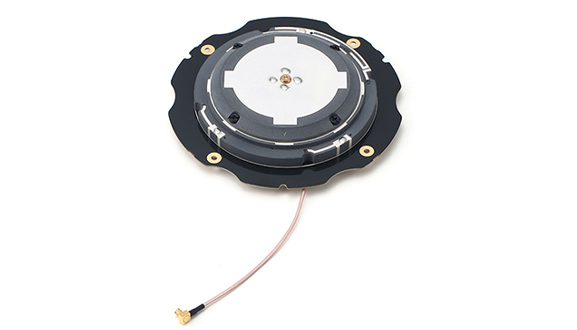How to customize a GNSS antenna?
To push the speed limit of a race car, designers modify specific parts such as spoilers, splitters and diffusers to optimize their aerodynamic performance. Similarly, when designing a GNSS (Global Navigation Satellite System) solution with an embedded receiver, design engineers can also modify components such as the antenna to maximize functionality.
For products with embedded GNSS receivers, the GNSS antenna has a critical impact on performance. Designers must consider features such as form factor, shape, size, weight and adaptability based on specific needs. They should also consider front-end RF signal components, which are critical to the effectiveness of the system.
What do we consider when customizing a GNSS antenna?
The GNSS antenna is very important to the overall signal reception and is also one of the decisive factors in achieving centimeter-level accuracy (i.e. high-precision GNSS). This involves multiple factors, including GNSS signal strength during operation (approximately -130 to -167dBm), radiation direction, gain, polarization, and impedance matching with the transmitting or receiving system, which is ideally 50Ω at GNSS frequencies.
Of course, designers need to tailor antennas to the needs of the end solution. In the automotive sector, the aerodynamic performance of the antenna is critical. In the case of an electric motorcycle, for example, the antenna must be tailored to the vehicle design, and the right mounting method must always be considered. Antennas for UAVs (unmanned aerial vehicles) must be lightweight, as this sector has a clear classification based on weight and its impact on flight time. On the other hand, in surveying missions, accuracy is more important than weight.

In addition to these broader considerations, there are also specific considerations that vary from case to case. For example, in a specific application, the antenna may need to eliminate multipath effects or reject signals near the horizon. Two other common requirements for antennas are to reduce in-band interference leakage caused by nearby high-speed digital electronics and to filter specific interference from nearby or even co-located RF devices.
What are the basic considerations when faced with so many choices?
In addition, a GNSS receiver may be compatible with a variety of antennas, so you need to establish some basic criteria when choosing the right one for you among the many products on the market. GNSS receivers can achieve higher performance when paired with antennas that have the following key features:
Support the same satellite constellation as the receiver, ensuring that the transmit frequency is compatible with the design frequency of the antenna and receiver
The phase center variation in elevation/azimuth is preferably less than 10 mm
The radiation efficiency of the antenna element must be higher than 40%. Otherwise, the active LNA (low noise amplifier) needs to have a small value and high enough gain (including cable losses) to ensure that the noise of the cascaded antenna and receiver system does not exceed 3dB.
Low noise design maintains a high signal-to-noise ratio, thereby improving signal quality and improving the accuracy of positioning and navigation calculations.
Broad bandwidth capabilities support reception of signals at a wide range of frequencies while suppressing environmental interference.
Compact and small designs support seamless integration, especially for space-constrained devices and applications.
Custom embedded antennas can meet performance targets while meeting mechanical constraints.
In addition to the characteristics of the antenna, interaction between the GNSS receiver supplier and the antenna supplier is required to ensure the design is successful. The entire solution must be evaluated to ensure the proper functioning of the GNSS system. Therefore, antenna suppliers must be provided with GNSS receiver roadmaps, samples and specifications at the appropriate stage.
The earlier this interaction occurs, the more opportunities the antenna supplier has to validate overall performance. With this validation, customers can consider various baseline designs for different specific applications. Additionally, validated designs can reduce the number of iterations, thereby shortening time to market. This ultimately benefits the customer.


